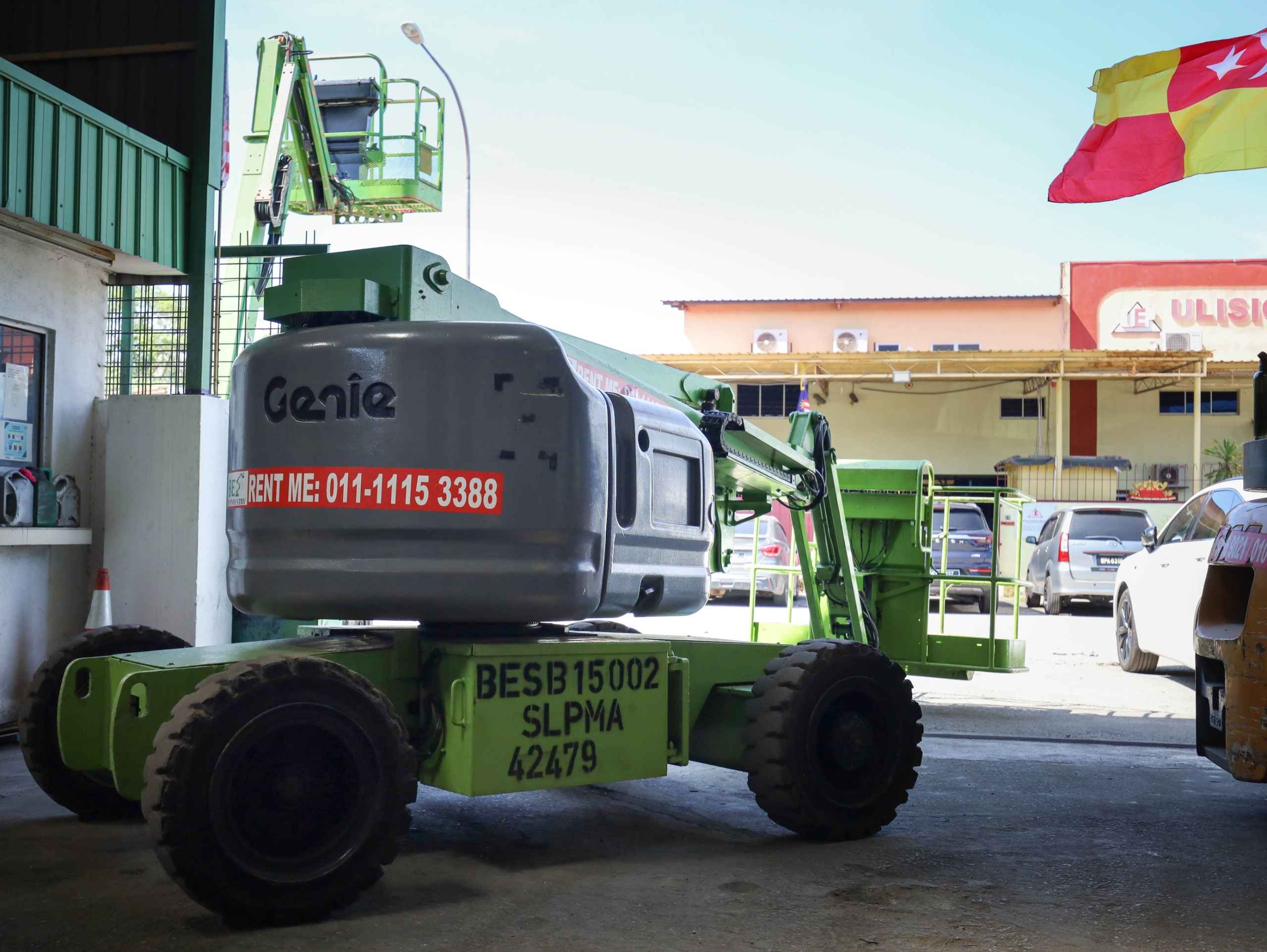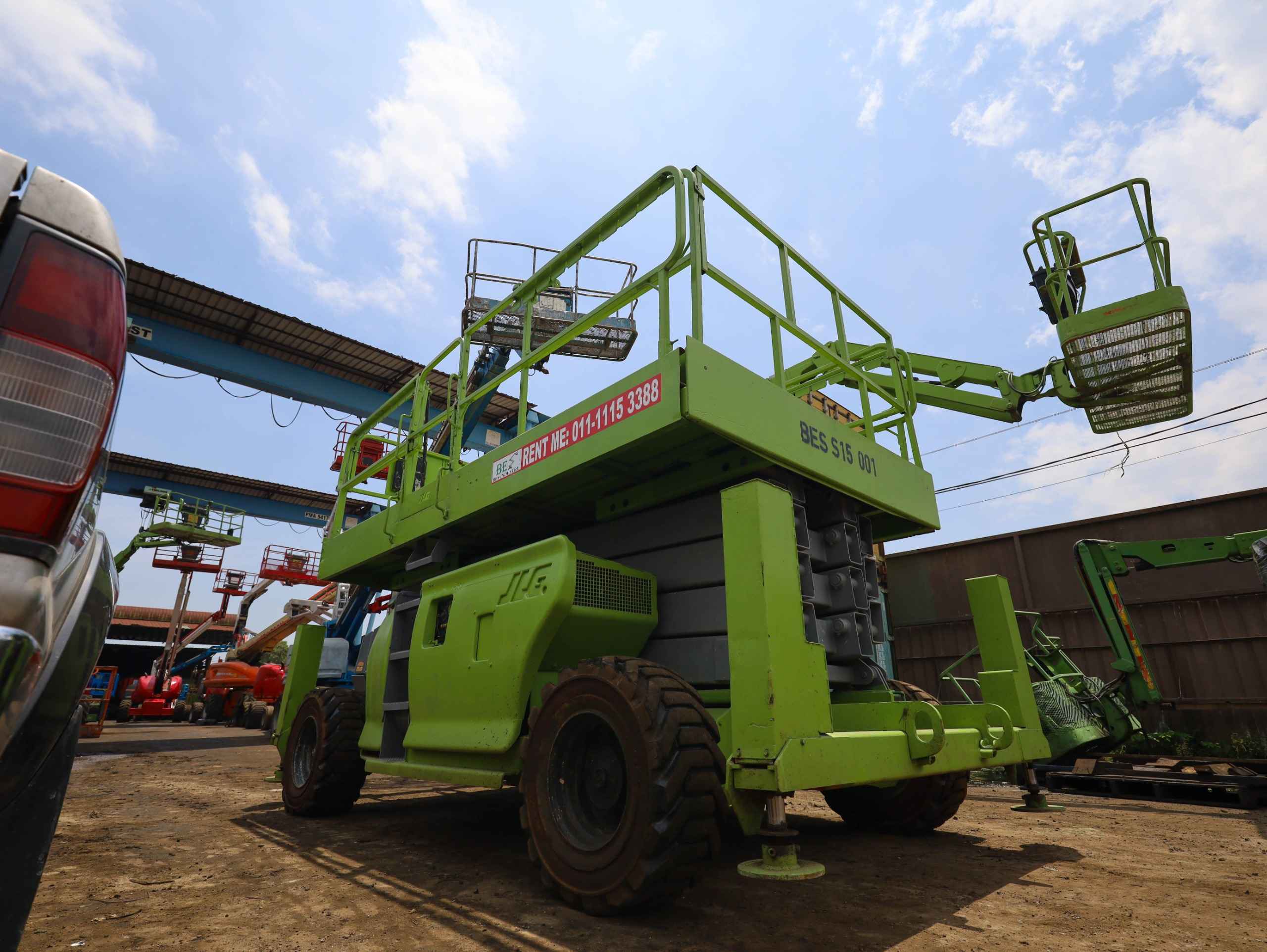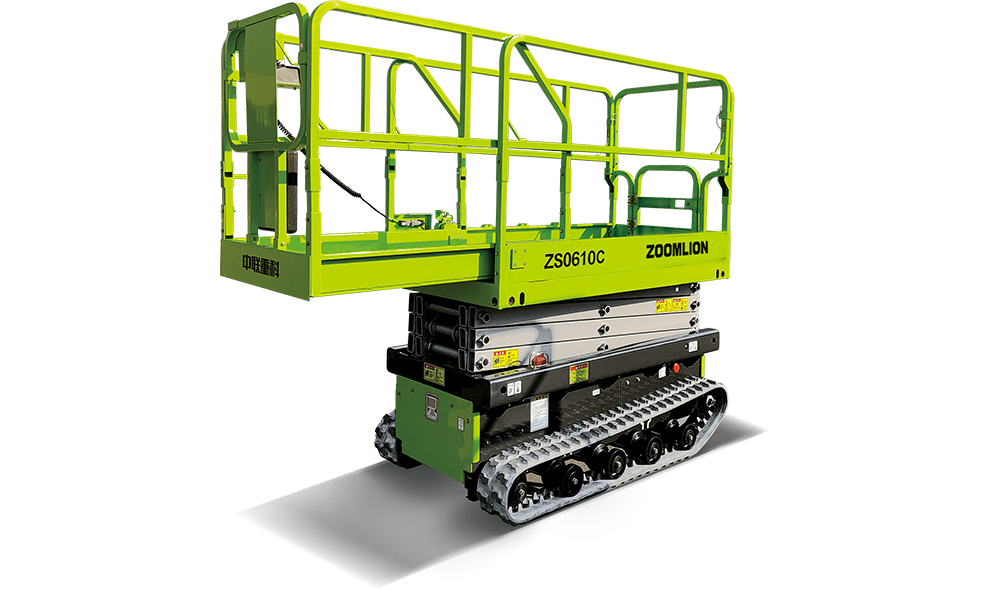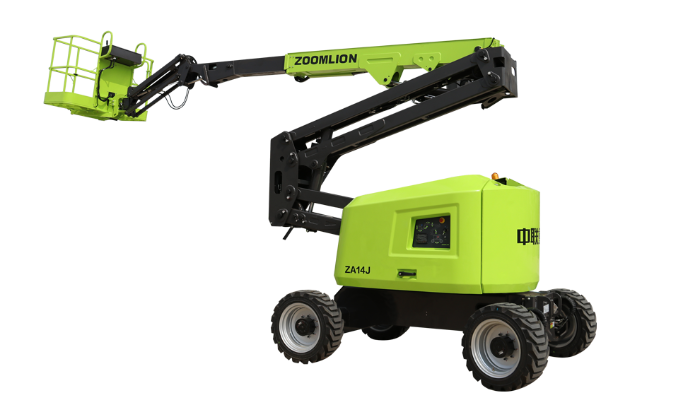When tackling lofty tasks, selecting the right aerial lift becomes essential. These machines empower workers to scale heights safely and efficiently. However, with various options available, making the best choice can seem overwhelming. Here’s an engaging guide to understanding different aerial lifts, their features, and their ideal applications.
Let’s explore the options!
1. Scissor Lifts
Scissor lifts excel in delivering vertical elevation with unmatched stability. Their platform rises straight up using a crisscross mechanism. These lifts suit projects where workers need steady platforms to operate tools or perform installations.
Workers often use scissor lift for tasks like changing light fixtures, fixing overhead signs, or installing ceiling panels. Electric scissor lifts operate quietly and fit perfectly in indoor spaces. Diesel-powered models, with robust builds, dominate outdoor construction sites.
While reliable, scissor lifts demand flat, even ground to function effectively. Uneven terrain renders them less effective.
When to Choose Scissor Lifts:
- Managing maintenance indoors.
- Operating in construction zones with smooth floors.
- Handling tasks requiring more than one worker on a platform.
2. Genie Boom Lifts
Genie boom lifts redefine flexibility. They extend both vertically and horizontally, offering access to otherwise unreachable areas. Workers favour them for outdoor maintenance and construction, where both height and outreach matter.
Boom lifts navigate obstacles seamlessly. Operators can steer them into tight spots with ease. The variety of fuel types, including electric, diesel, and hybrid, enhances their versatility. Electric versions thrive indoors, while rugged diesel-powered ones conquer tough outdoor conditions.
When to Choose Genie Boom Lifts:
- Performing repairs in elevated outdoor spaces.
- Accessing remote corners.
- Working on uneven or rugged terrain.
3. Articulated Aerial Platforms
Articulated aerial platforms thrive in areas with restricted access. Their jointed arms bend and swivel to manoeuvre around obstacles. Operators often favour these lifts in warehouses, shopping centres, or factories where space is limited.
Some articulated lifts come mounted on trucks, expanding their usage for outdoor operations. Battery-powered variants ensure quiet, emission-free indoor tasks, while diesel options handle outdoor challenges with ease.

These machines excel in versatility and flexibility, making them a preferred choice in tricky environments.
When to Choose Articulated Aerial Platforms:
- Navigating complex layouts or confined spaces.
- Bypassing obstacles like beams or machinery.
- Tackling tasks demanding precision and height.
4. Spider Lifts
Spider lifts bring unique adaptability with their extendable, stabilising legs. These legs create balance on uneven surfaces. Their lightweight, compact design allows operators to use them in tight spaces.
Spider lifts excel outdoors on rugged terrain, sloped grounds, or soft grass. Many models fit through standard doorways, offering flexibility for indoor applications. Hybrid power options add to their adaptability, switching seamlessly between electric and diesel power.
When to Choose Spider Lifts:
- Working on slopes or irregular terrain.
- Managing compact spaces requiring mobility.
- Performing tasks in both indoor and outdoor settings.

Key Factors for Choosing the Right Aerial Lift
Selecting the right lift involves understanding project needs. Here are crucial factors to consider:
- Height Requirements
Evaluate the maximum height needed. Genie boom lifts suit towering jobs, while scissor lifts cover moderate elevations. - Workspace Obstacles
Analyse the workspace layout. Articulated aerial platforms or spider lifts navigate obstructions effectively
3. Surface Conditions
Determine if the ground is smooth or rough. Scissor lifts work best on even surfaces, while spider or boom lifts manage rough terrains.
4. Weight Capacity
Consider the load. If the task demands heavy tools or accommodates multiple workers, ensure the lift can handle it.
5. Power Source
Decide between electric and diesel power. Electric lifts operate cleanly indoors, while diesel-powered models perform well outdoors.
Safety Guidelines for Aerial Lifts
Safety must take precedence when operating aerial lifts. Proper training equips workers to handle these machines efficiently. Equip every worker with safety harnesses. Inspect lifts before every use to ensure reliability.
Follow the equipment’s weight limits without exceptions. Regular maintenance keeps lifts functional and reduces risks. Remember, a well-maintained machine promotes a safe working environment.
Applications of Aerial Lifts
Aerial lifts cater to various industries. Here’s a breakdown of common uses:
- Construction and Renovation
Contractors rely on scissors and boom lifts for installing windows, painting walls, and repairing roofs. - Facility Maintenance
Facility managers use aerial platforms to clean windows, replace bulbs, or fix HVAC systems in tall buildings. - Event Setup
Event organisers deploy lifts to hang decorations, set up lighting rigs, or assemble stages. - Outdoor Landscaping
Spider lifts help landscapers trim tall trees or install outdoor lighting in uneven gardens.
Final Thoughts
High-reach tasks become manageable with the right aerial lift. Scissor lifts offer stability, spider lifts adapt to uneven grounds, Genie boom lifts maximize outreach, and articulated platforms ensure precision. By matching a lift to the project’s needs, workers improve efficiency, enhance safety, and complete tasks on time.
At BES Industry & Trading Sdn Bhd, we provide a comprehensive range of high-quality aerial lifts tailored to your unique project requirements. Partner with us for reliable solutions and expert support to elevate your operations with confidence!





